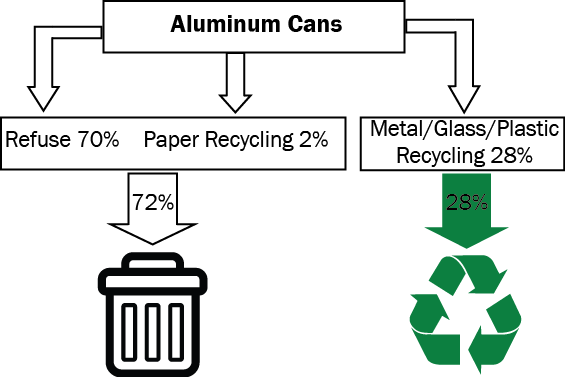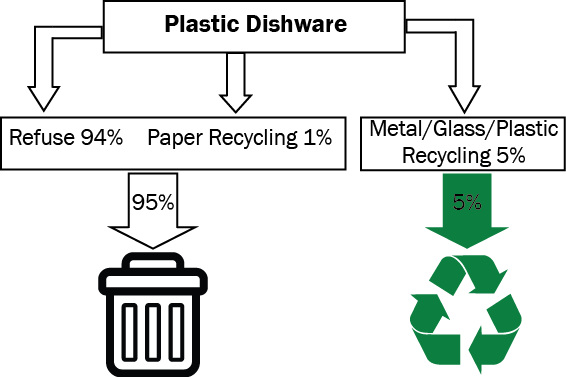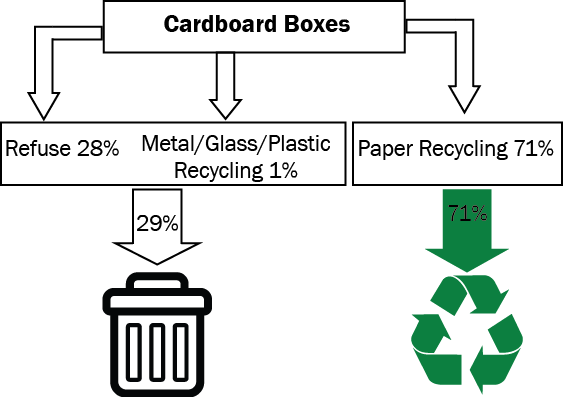New York City recycles a wide variety of waste, but some materials are more likely to be recycled than others. The city has three solid waste streams: refuse, paper recycling, and metal/glass/plastic recycling. Overall, about 44 percent of recyclable material is “captured” by city recycling programs with the remainder sent to landfills, according to data from the Department of Sanitation’s 2013 Residential Waste Characterization Study. But a lot of recyclables are thrown in the wrong bins—aluminum cans, for example, tossed in with regular trash. As a result, the capture rate for each of the recyclable materials varies widely, from as low as 5 percent to as high as 75 percent. Material that ends up in the refuse stream or the wrong recycling stream is not recycled. In fact, such “contamination” makes recycling more expensive.
- Only about 28 percent of aluminum cans collected by the Department of Sanitation are captured in the metal/glass/plastic stream.
- This below-average rate may in part reflect the more frequent scavenging of cans from the city’s recycling bins than trash cans. This takes aluminum cans out of the recycling stream, but leaves them in the refuse stream and headed to landfills. Aluminum is one of the most valuable recycled metals providing greater incentives for scavenging.
- Plastic dishware, which includes single use plastic cups, plates, and cutlery, has the lowest capture rate—only 5 percent of the material collected enters the recycling stream.
- Plastic dishware is part of rigid plastics, which was added as a voluntary category for recycling in 2013—during the Waste Characterization Study period. It did not become a required recycling category until after the study ended. It can take years for recycling rates to rise as New Yorkers learn about items added to the list of recyclables.
- Green container glass has the highest capture rate of any material category, with 75 percent of this glass in the waste stream being recycled.
- Glass has a long history of being recycled and public awareness is high, boosting the capture rate. Additionally, glass is not a valuable recycling commodity; only bottles that require a deposit have value outside the city waste stream.
- Cardboard boxes and related paper products have one of the highest capture rates of any material, with 71 percent entering the paper recycling stream.
- The city has a long and uninterrupted history of paper recycling. The high capture rate may also reflect the ease of recycling large foldable items like boxes.
- Paper is the only material for which commodity prices exceed the cost of processing—meaning that New York City is paid to recycle paper.
Prepared by Daniel Huber
New York City Independent Budget Office
Print version available here.
SOURCES: New York City 2013 Residential Waste Characterization Study
| New York City By The Numbers |



